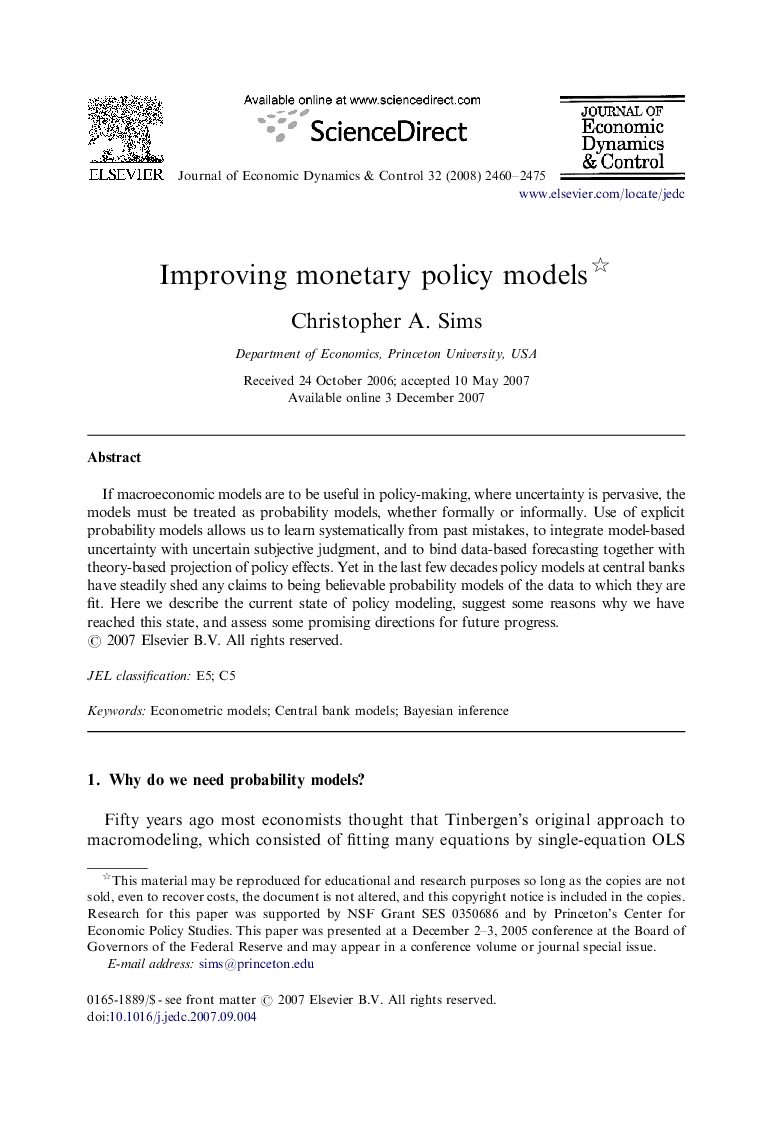| Article ID | Journal | Published Year | Pages | File Type |
|---|---|---|---|---|
| 5099244 | Journal of Economic Dynamics and Control | 2008 | 16 Pages |
Abstract
If macroeconomic models are to be useful in policy-making, where uncertainty is pervasive, the models must be treated as probability models, whether formally or informally. Use of explicit probability models allows us to learn systematically from past mistakes, to integrate model-based uncertainty with uncertain subjective judgment, and to bind data-based forecasting together with theory-based projection of policy effects. Yet in the last few decades policy models at central banks have steadily shed any claims to being believable probability models of the data to which they are fit. Here we describe the current state of policy modeling, suggest some reasons why we have reached this state, and assess some promising directions for future progress.
Keywords
Related Topics
Physical Sciences and Engineering
Mathematics
Control and Optimization
Authors
Christopher A. Sims,
